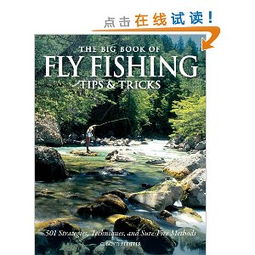Content:
Winter fishing can be a challenging yet rewarding experience for anglers. The cold weather, icy waters, and reduced fish activity make it essential to have the right techniques and strategies. One of the most crucial aspects of winter fishing is finding the bottom effectively. In this article, we will discuss the winter fishing techniques and tips on how to find the bottom, ensuring a successful and enjoyable fishing trip.
Understand the Winter Fishing Environment
Before diving into the techniques for finding the bottom, it's essential to understand the winter fishing environment. During the winter months, water temperatures drop, causing fish to become less active and move to deeper, warmer waters. Additionally, the reduced sunlight and lower water temperatures can lead to increased oxygen demand and fish movement patterns.
Use the Right Equipment
The right equipment is crucial for winter fishing, especially when it comes to finding the bottom. Here are some essential tools and gear to consider:
a. Heavy-duty rod and reel: Winter fishing often requires heavy-duty equipment to handle the increased pressure and resistance from larger fish.
b. Quality line: Use a high-quality, heavy-duty line that can withstand the cold temperatures and potential ice formation.
c. Sinker: A good quality sinker is essential for finding the bottom. Look for sinkers made from materials that are less likely to freeze, such as tungsten or brass.
d. Bait: Choose bait that is suitable for winter fishing, such as live bait, frozen baits, or artificial lures designed for cold water conditions.
Start with a Clear Spot
To find the bottom, begin by searching for a clear spot on the lake or riverbed. This can be a sandy or rocky area where the water is relatively clear and free of debris. A clear spot will help you identify the bottom more easily and determine the fish's location.
Use a Fish Finder

A fish finder is an invaluable tool for winter fishing, especially when it comes to finding the bottom. A fish finder can help you identify the depth of the water, the presence of fish, and the structure of the lake or riverbed. Make sure to familiarize yourself with the fish finder's features and settings to make the most of it.
Pay Attention to Currents and Tides
Understanding the currents and tides is crucial for finding the bottom in winter fishing. Fish often move to areas with strong currents or tides, as these areas can provide them with the necessary oxygen and food. Pay attention to the direction and strength of the currents and tides, and adjust your fishing spot accordingly.
Cast and Retrieve Methodically
When searching for the bottom, it's essential to cast and retrieve methodically. Here are some tips to help you do so:
a. Cast out with a slow, steady motion to avoid spooking the fish.
b. Allow the bait to sink to the bottom for a few seconds before retrieving it.
c. Vary your retrieve speed and depth to mimic the natural movement of the bait.
d. Be patient and give the fish time to respond to your bait.
Adjust Your Approach Based on the Water Conditions
Water conditions can vary significantly during winter fishing, and it's essential to adjust your approach accordingly. Here are some tips for different water conditions:
a. Clear Water: In clear water, you can use lighter gear and baits, as fish are more likely to be near the surface. Pay attention to the fish finder's readings to identify the bottom and adjust your fishing spot accordingly.
b. Icy Water: In icy water, fish may be found in deeper, warmer waters. Use heavier gear and baits to reach the bottom effectively. Pay attention to the fish finder's readings to identify the fish's location and adjust your fishing spot accordingly.
c. Windy Conditions: In windy conditions, fish may move to areas with less wave action, such as protected coves or inlets. Cast into these areas and adjust your approach accordingly.
Practice and Patience
Finding the bottom in winter fishing requires practice and patience. Spend time familiarizing yourself with the techniques and equipment, and don't be afraid to experiment with different approaches. Remember that fish may be less active during the winter months, so patience is key.
In conclusion, mastering the technique of finding the bottom is crucial for a successful winter fishing trip. By understanding the winter fishing environment, using the right equipment, and employing the appropriate techniques, you can increase your chances of catching fish during the cold months. Remember to practice and be patient, and you'll be well on your way to becoming a winter fishing expert.












